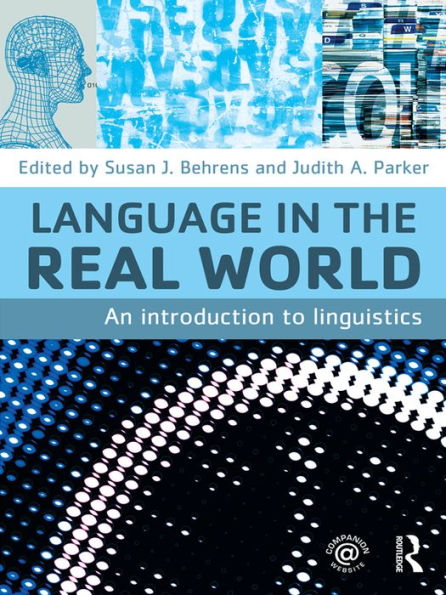Language in the Real World challenges traditional approaches to linguistics to provide an innovative introduction to the subject. By first examining the real world applications of core areas of linguistics and then addressing the theory behind these applications, this text offers an inductive, illustrative, and interactive overview for students. Key areas covered include animal communication, phonology, language variation, gender and power, lexicography, translation, forensic linguistics, language acquisition, ASL, and language disorders. Each chapter, written by an expert in the field, is introduced by boxed notes listing the key points covered and features an author’s note to readers that situates the chapter in its real world context. Activities and pointers for further study and reading are also integrated into the chapters and an end of text glossary is provided to aid study.
Professors and students will benefit from the interactive Companion Website that includes a student section featuring comments and hints on the chapter exercises within the book, a series of flash cards to test knowledge and further reading and links to key resources. Material for professors includes essay and multiple choice questions based on each chapter and additional general discussion topics.
Language in the Real World shows that linguistics can be appreciated, studied, and enjoyed by actively engaging real world applications of linguistic knowledge and principles and will be essential reading for students with an interest in language.
Visit the Companion Website at www.routledge.com/textbooks/languagerealworld
Language in the Real World challenges traditional approaches to linguistics to provide an innovative introduction to the subject. By first examining the real world applications of core areas of linguistics and then addressing the theory behind these applications, this text offers an inductive, illustrative, and interactive overview for students. Key areas covered include animal communication, phonology, language variation, gender and power, lexicography, translation, forensic linguistics, language acquisition, ASL, and language disorders. Each chapter, written by an expert in the field, is introduced by boxed notes listing the key points covered and features an author’s note to readers that situates the chapter in its real world context. Activities and pointers for further study and reading are also integrated into the chapters and an end of text glossary is provided to aid study.
Professors and students will benefit from the interactive Companion Website that includes a student section featuring comments and hints on the chapter exercises within the book, a series of flash cards to test knowledge and further reading and links to key resources. Material for professors includes essay and multiple choice questions based on each chapter and additional general discussion topics.
Language in the Real World shows that linguistics can be appreciated, studied, and enjoyed by actively engaging real world applications of linguistic knowledge and principles and will be essential reading for students with an interest in language.
Visit the Companion Website at www.routledge.com/textbooks/languagerealworld

Language in the Real World: An Introduction to Linguistics
392
Language in the Real World: An Introduction to Linguistics
392Related collections and offers

Product Details
| ISBN-13: | 9781136887253 |
|---|---|
| Publisher: | Taylor & Francis |
| Publication date: | 05/13/2010 |
| Sold by: | Barnes & Noble |
| Format: | eBook |
| Pages: | 392 |
| File size: | 4 MB |
